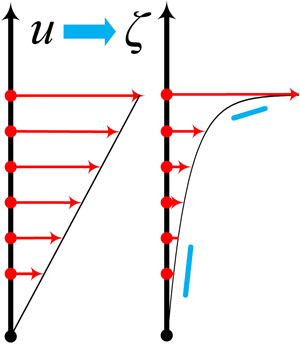Crossref Citations
This article has been cited by the following publications. This list is generated based on data provided by
Crossref.
Jiang, Weiquan
and
Chen, Guoqian
2021.
Transient dispersion process of active particles.
Journal of Fluid Mechanics,
Vol. 927,
Issue. ,
Zhao, Yan-fang
Fan, Jing-jing
Wang, Wei-jie
Zhao, Han-qing
Dong, Fei
Han, Zhen
and
Wang, Shi-yan
2022.
Dispersion features of pollutants in a compound channel with vegetated floodplains.
Journal of Hydrodynamics,
Vol. 34,
Issue. 6,
p.
1095.
Wang, Bohan
Jiang, Weiquan
and
Chen, Guoqian
2022.
Gyrotactic trapping of micro-swimmers in simple shear flows: a study directly from the fundamental Smoluchowski equation.
Journal of Fluid Mechanics,
Vol. 939,
Issue. ,
Guan, M.Y.
Zeng, L.
Jiang, W.Q.
Guo, X.L.
Wang, P.
Wu, Z.
Li, Z.
and
Chen, G.Q.
2022.
Effects of wind on transient dispersion of active particles in a free-surface wetland flow.
Communications in Nonlinear Science and Numerical Simulation,
Vol. 115,
Issue. ,
p.
106766.
Jiang, Weiquan
Zeng, Li
Fu, Xudong
and
Wu, Zi
2022.
Analytical solutions for reactive shear dispersion with boundary adsorption and desorption.
Journal of Fluid Mechanics,
Vol. 947,
Issue. ,
Pierce, J. Kevin
Hassan, Marwan A.
and
Ferreira, Rui M. L.
2022.
Probabilistic description of bedload fluxes from the aggregate dynamics of individual grains.
Earth Surface Dynamics,
Vol. 10,
Issue. 4,
p.
817.
Zhao, Han-Qing
Wang, Wei-Jie
Zhao, Yan-Fang
Liu, Xiao-Bo
Chou, Qing-Chuan
and
Gao, Yu
2023.
New hyperbolic tangent formula for mixing layer in vegetated flow.
Journal of Hydrology,
Vol. 617,
Issue. ,
p.
129061.
Li, Guangmiao
Gong, Zheng
Jiang, Weiquan
Zhan, Jie
Wang, Bohan
Fu, Xudong
Xu, Mengzhen
and
Wu, Zi
2023.
Environmental Transport of Gyrotactic Microorganisms in an Open‐Channel Flow.
Water Resources Research,
Vol. 59,
Issue. 4,
Wang, Wei-Jie
Zhao, Fang
Mavrommatis, Aristotelis
Christodoulou, George
Stamou, Anastasios
and
Jia, Feng-Cong
2023.
Velocity distribution characteristics for rigid vegetation model with spherical canopy: An analytical study adopting multiple mathematical methods.
Journal of Hydrology,
Vol. 620,
Issue. ,
p.
129376.
Wang, Wei-Jie
Zhao, Yan-Fang
Ren, Shi
Liu, Xiao-Bo
Dong, Fei
Li, Jin-Jin
Fan, Jing-Jing
and
Wu, Wen-Qiang
2023.
Analytical solutions of flow velocity profile based on the morphological response of flexible vegetation.
Journal of Hydrology,
Vol. 624,
Issue. ,
p.
129839.
Zhang, Jiao
Geng, Yingying
Wu, Zi
Wang, Wen
Miao, Mengmeng
Wang, Huilin
Li, Zhanbin
and
Guan, Muhong
2023.
A partitioned model for predicting the spatial development of flow in ecological vegetated rivers with submerged vegetation.
Ecological Indicators,
Vol. 149,
Issue. ,
p.
110146.
Singh, Arvind
Wu, Zi
Wilcock, Peter
and
Foufoula‐Georgiou, Efi
2023.
Experimental Observations of Bedload Tracer Movement: Effects of Mixed Particle Sizes and Bedforms.
Water Resources Research,
Vol. 59,
Issue. 5,
Wang, Ping
Zhang, Yonggang
Cheng, Jinhua
Zhang, Huilan
and
Zeng, Li
2023.
A momentum-based prediction model of backwater rise within and downstream of an emergent canopy in nonuniform flow.
Journal of Hydrology,
Vol. 625,
Issue. ,
p.
130140.
Wu, Zi
Jiang, Weiquan
Zeng, Li
and
Fu, Xudong
2023.
Theoretical analysis for bedload particle deposition and hop statistics.
Journal of Fluid Mechanics,
Vol. 954,
Issue. ,
Wang, Xiang
Gualtieri, Carlo
and
Huai, Wenxin
2023.
Grain shear stress and bed-load transport in open channel flow with emergent vegetation.
Journal of Hydrology,
Vol. 618,
Issue. ,
p.
129204.
Wang, Yongqiang
Zhang, Peng
Yang, Shengfa
Hu, Chunhong
Jin, Jianling
and
Zhang, Rangang
2023.
Characteristics of Large-Scale Coherent Structures on Irregularly Arranged Rough-Bed Open-Channel Flows.
Water,
Vol. 15,
Issue. 6,
p.
1105.
Yang, F. Y.
Wang, P.
Chen, X. L.
Zeng, L.
and
Guo, X. L.
2023.
Longitudinal dispersion of multiple Microcystis patches in a turbulent open-channel flow.
Energy, Ecology and Environment,
Vol. 8,
Issue. 1,
p.
50.
Zhao, Hanqing
Wang, Weijie
Jia, Fengcong
Wang, Huilin
Liu, Zhiwu
and
Xu, Yuxuan
2023.
Numerical and analytical flow models in ecological channels with interaction of vegetation and freshwater.
Frontiers in Environmental Science,
Vol. 11,
Issue. ,
Poddar, Nanda
and
Wang, Ping
2024.
Transport of reactive contaminant in a wetland flow with the effects of reversible and irreversible reactions on the bed surface.
International Communications in Heat and Mass Transfer,
Vol. 157,
Issue. ,
p.
107709.
Bai, Yu
Han, Lijuan
Zhao, Yufeng
Huang, Lu
Wang, Qian
and
Sun, Guojin
2024.
Numerical simulation of velocity distribution and pollution transport in a two-stage channel with vegetation on a floodplain.
Journal of Hydrology,
Vol. 630,
Issue. ,
p.
130788.

 $\sim$1.5 for the initial regime and
$\sim$1.5 for the initial regime and  $\sim$5/3 for the transition regime, which define the short hops, and 1 for the Taylor dispersion regime defining long hops. The corresponding distribution of the hop distance is analytically obtained and experimentally verified. We also show that the conventionally used exponential distribution, as proposed by Einstein, is solely for long hops. Further validation of the present formulation is provided by comparing the simulated accelerations with measurements.
$\sim$5/3 for the transition regime, which define the short hops, and 1 for the Taylor dispersion regime defining long hops. The corresponding distribution of the hop distance is analytically obtained and experimentally verified. We also show that the conventionally used exponential distribution, as proposed by Einstein, is solely for long hops. Further validation of the present formulation is provided by comparing the simulated accelerations with measurements.
